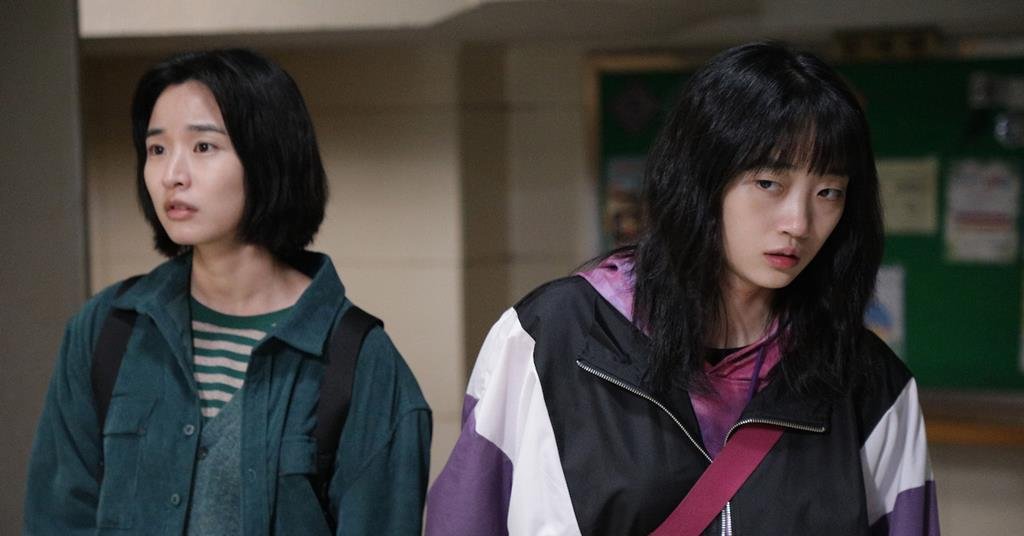
The scene opens with Sun-woo getting bullied by a group of students. Not long after, Sun-woo, along with Na-mi, another girl who is being bullied by the same group and is the only friend that he has, decide to commit a childish and ridiculous attempt of suicide, however, they chance upon the epiphany to murder those who turned their lives into hell instead of killing themselves. The primary bully, Chae-rin, and later on who has moved to Seoul, becomes their principal target. However, it gets a little complicated for them when they find out that Chae-rin started a new life, has become a born-again Christian and suddenly remembers the atrocities she committed in the past and is full of seeking forgiveness.
Lim takes the oft repeated subject of bullying and puts a fresh spin to it, writing and executing a narrative that is lively and with frequent moments of dry humour. Unpredictable and ever moving is the girls’ journey. In their tale, Lim explores the topic of forgiveness, as redemption, and their tangled and cyclical connection with each other. This is an interesting element that works best once Chae-rin’s are also comes into play.
The article depicts the ways in which these juvenile religious torrents operate and the sociopathic individuals that lead and establish these camps or organizations through their story. While in the 3rd part of the film, the plot takes an unexpected approach that wasn’t hinted towards before in the story, it still finds a way to cohesively fit the premise of the movie with any words or dialogues being considered unreasonable.
I, however, want to take this opportunity to commend Yu-Hyeon and Barbara Otou who were the leading stars of the movie, as the best features of the movie other than the storyline and cinematography were the two actresses alongside their representations for their roles in the movie, and the characters were presented beautifully. Yu-Hyeon does an outstanding job at delivering her character’s role as a young woman whose extensive skill set and immense possibilities are perfectly showcased throughout the movie. Mark too gets praise for portraying Sun-woo perfectly by emphasizing on her determination in combination with the subdued energy of her character as an actress. I guess “okie okie” If considered would be a phrase that fits perfectly in the context of the movie. The charisma these two women have is delightful to watch and together they form a unique but safe electric attraction.
In a similar manner to her role in the series Jung Yi-ju was reserved for a limited number of episodes in and did a stellar job, this time also she has been slotted into a role for Chae-rin appropriately, making it fuzzy whether or not the girl has actually changed for the better. She seems capable of bringing enough creepiness to the single significant male character in the film, the church deacon role presented by Park Sung-hoon as Myung-ho with the only notable the ladies as clearly being in charge and directing the film quite the contrary.
In the same way that Lim handles the otherwise weighty topic, which is slightly unsystematic, such as using a diverse and delightfully vivid cinematography style. As Lem does, if he adorns the scenes Apparently as that of a disturbed teenager conjuring suicide, so does the camera work which at the same time keeps things animated. There are even some standout musical pieces that are well timed, but are not overpowering the actions that are happening in the scenes, but enhancing the more quiet moments in the film.
At the end of all that, it is quite safe to say that “Hail to Hell” is quite intriguing and somewhat impressive, and even though it is not groundbreaking in its genre, it succeeds admirably in its unconventional perspective and in particular its two new and young protagonists.
For More Movies Like Hail to Hell (2022) Visit solarmovie.







